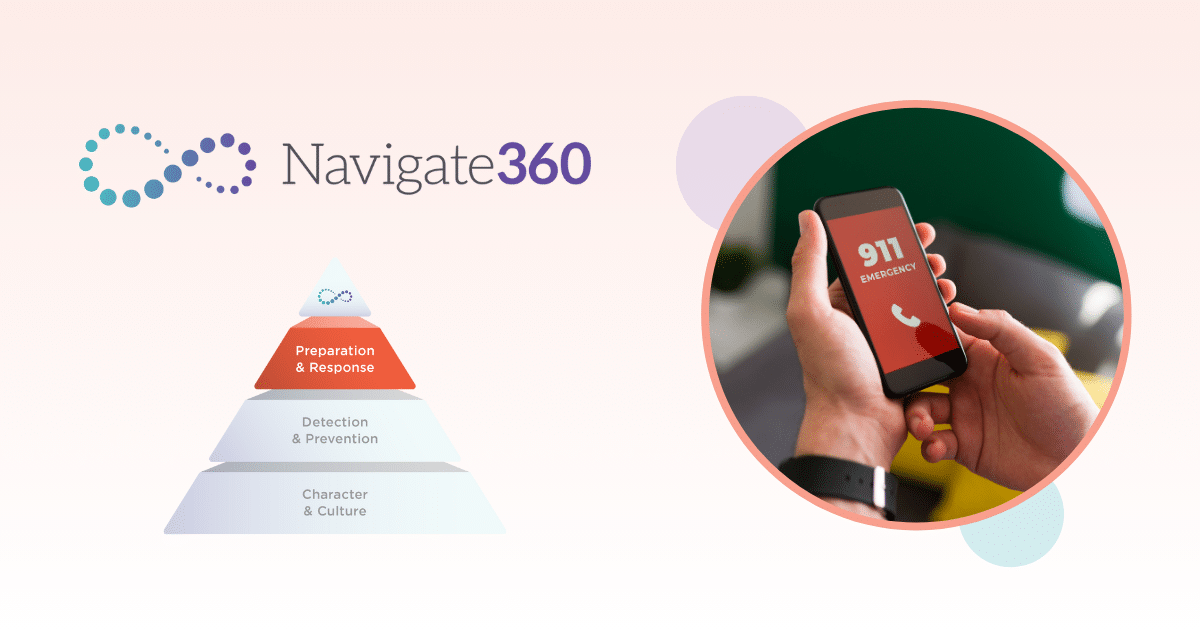Is your school truly ready to face emergencies, spanning from human-caused threats to natural disasters and health crises? When it comes to student and staff safety, there’s no room for uncertainty. It’s imperative for schools to proactively plan for potential emergencies. By partnering with local government and the community, schools can craft a robust School Emergency Operations Plan (EOP). These plans serve as a vital shield, helping schools prevent disasters or minimize their impact. Discover the top 5 strategies to bolster emergency preparedness in schools and ensure the well-being of everyone involved.
1. Develop an Emergency Operations Plan
A well-organized, comprehensive emergency operations plan (EOP) includes instructions in sequential order for a variety of possible situations. It also prioritizes notification of emergency response personnel and is designed to limit escalation and injury. Once complete, the plan needs to be reviewed and updated annually.
What Should be Included in Your Schools’ EOP?
- A list of emergency contact information for local authorities (police, fire/EMS, hospitals, poison control, health department, children’s services, etc.), utility companies, property management, insurance agencies, etc.
- Evacuation site location(s) on school grounds (for fire) and off school grounds (for bomb threats, active shooter, chemical spills or other larger-scale disasters)
- Disaster response roles (determine who calls 911, communicates instructions within the building, leads student/parent reunification efforts, etc.)
- Reunification procedures
- Post-emergency crisis response actions
- Drill schedules and records
- Building maps
- Building system locations (alarm control panels, gas, sprinkler and other shut-off valves, etc.)
Local or state governing bodies may provide a specific format to follow, or a certain list of emergencies for each school to prepare for. Depending on your school’s geographical location, there might be additional requirements related to preparedness drills for certain natural disasters. For instance, schools in California typically conduct routine earthquake drills, whereas schools in the Midwest, where earthquakes are less common, may focus on tornado drills. Whether your school conducts drills or has established contingency plans, it is crucial to take into account all potential emergency situations. Here are the types of emergency scenarios to contemplate when developing EOPs to enhance overall emergency preparedness in schools:
- Fire
- Natural Disasters like earthquakes, tornadoes, hurricanes, floods, winter storms and landslides.
- Active Shooter
- Pandemic
- Missing Child
- Kidnapping
- Gas Leak
- Bomb Threat
- Field Trip Incident
- Assault on Child or Staff
Establishing a well-defined plan that assigns specific roles and responsibilities to various staff members can alleviate the decision-making burden on administrators, especially during high-stress situations. Additionally, consider discussing the potential need for an off-site reunification location in cases where safety concerns, such as a gas leak or bomb threat, render the school premises unsafe for students and staff.
2. Develop a Crisis Response Team
School staff and administrators are keenly aware of how trauma can profoundly impact a student’s learning journey. It has the power to disrupt memory and impair cognitive function, often leading to diminished academic performance, which can potentially limit future job prospects. Recognizing and addressing students’ mental well-being is not just essential for their immediate health but also crucial for their long-term success. Schools must be proactive in preparing to respond effectively to traumatic events before they occur.
To achieve this, a dedicated crisis response team, composed of mental health experts, plays a pivotal role in providing support and intervention following an emergency. These experts not only acknowledge and validate students’ emotional experiences but also impart healing strategies and activities that enable them to cope with trauma in a healthy manner. While the path to trauma recovery is a deeply personal journey, schools bear the responsibility of ensuring the availability of appropriate resources during times of crisis, both for affected children and adults, to facilitate the healing process.
3. Develop a Communication Plan
Every school’s comprehensive emergency plan must include a robust communication protocol. Effective communication is vital during crises, as it keeps those affected well-informed and safe. In addition to this, parents must also receive timely updates about the unfolding danger at the school and the procedures for reuniting with their children.
Technology like Navigate360’s Emergency Management (EMS) streamlines communication during a crisis. Consider the traditional method of a principal manually checking class accountability by physically visiting various safety checkpoints. Not only does this introduce the potential for human error during high-stress situations, but it’s also time-consuming. Instead, EMS offers a streamlined solution with synchronized class roster data that can be easily managed and accessed by administrators, providing them with peace of mind as they respond to the incident.
EMS also simplifies the reunification process. Once students are accounted for, teachers can release them to their parents and track the remaining reunions. Administrators maintain a clear view of the student reunification process. Moreover, the in-app chat feature facilitates seamless communication among administrators and staff, ensuring a smooth and coordinated response without any process gaps. This technology truly revolutionizes crisis management for all involved parties.
Additionally, EMS users have the capability to initiate alarms via the desktop or mobile application. These alarms not only alert staff to the emergency but also enable them to mark themselves as safe and start accounting for other students and staff.
One notable feature is that EMS allows for the sharing of critical information with first responders. This includes providing them access to school district maps and floor plans, which can be invaluable during critical response situations.
4. Provide Regular Practice & Training
While having plans in place is essential, their true value comes from regular practice and training to reinforce the outlined procedures. Proactive drills and training instill confidence in everyone’s ability to fulfill their responsibilities, ensuring that when a real emergency arises, immediate action can be taken without the need for further instructions.
The importance of school safety has gained national attention, with at least 44 states and the District of Columbia mandating school safety plans through statutes or regulations. Additionally, in at least 17 states, local law enforcement agencies are required to participate in conducting school safety drills.
Even since the tragic events at Marjory Stoneman Douglas High School in Parkland Florida, states have enacted laws necessitating various emergency drills to protect students from intruders. When you factor in monthly and/or annual fire and tornado drills, it becomes a lot to manage.
To streamline the scheduling and logging of these drills while maintaining accountability and transparency, schools now have access to the Drill Management module in Navigate360’s EMS software. This tool empowers administrators to schedule drills for the entire year and even share the schedule with local emergency agencies, ensuring everyone is well-informed and prepared.
5. Partner with a Safety Expert
Navigate360 Can Help You with Your Preparedness Plan
Do you have a school emergency preparedness plan? No matter the size of your school district, partnering with a safety expert is crucial to ensure comprehensive coverage. Navigate360 utilizes the latest practices and technology, providing you with confidence in your safety strategy.
Each school is unique, and our plans are customized to meet your specific needs. To learn how we can assist you in implementing the right safety preparedness plans, reach out to our specialists at 330-661-0106 or visit navigate360.com.
Upgrade your plan, empower your school. Contact our safety experts today.
ALICE Training® & Navigate360’s Emergency Management Suite Work Better Together for Your School’s Safety Planning
You can’t know if or when an emergency will occur, but you can benefit from knowing that you have taken steps to prepare.
ALICE Training® empowers individuals to prepare for and respond to high-stress emergencies and acts of violence with courage and resilience. A perfect complement to ALICE Training ®, Navigate360’s Emergency Management Suite is a comprehensive solution that equips schools to handle a wide range of crises effectively. Whether it be natural disasters, medical emergencies, an active shooter incident, or something else, this technology streamlines response efforts, facilitates communication, and minimizes disruptions. Create and manage emergency operation plans, coordinate drills and drill logs, save and manage maps and floor plans, and more.
Don’t just rely on hope, download our free eBook, Response Begins with Preparation: Equip Your Schools for the Unthinkable, to learn more about emergency planning for a variety of scenarios.




